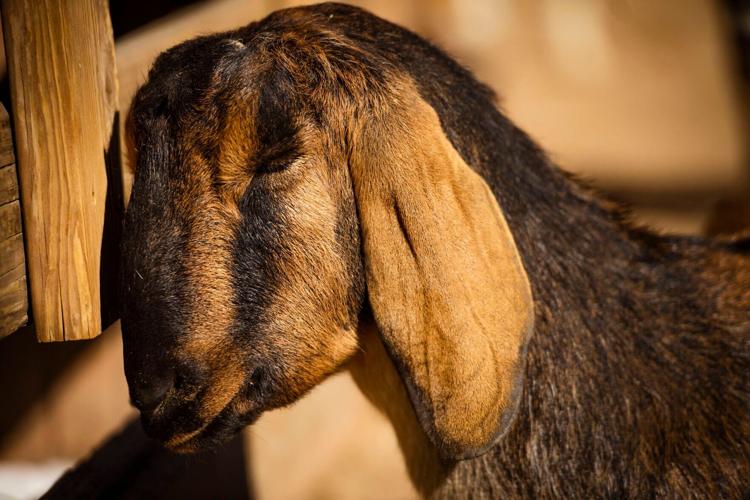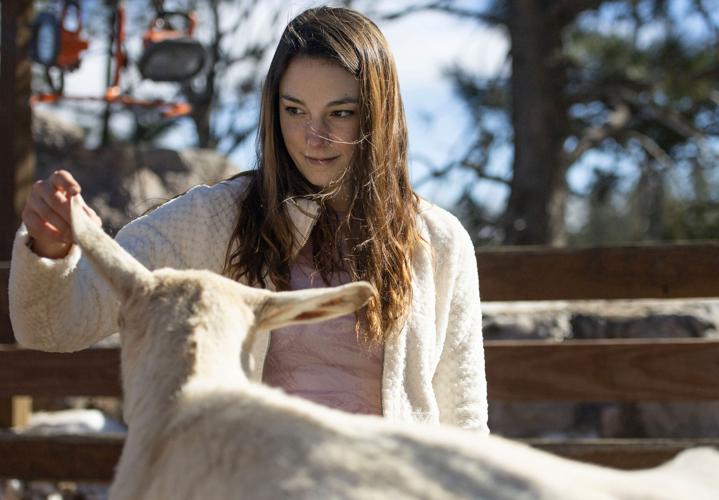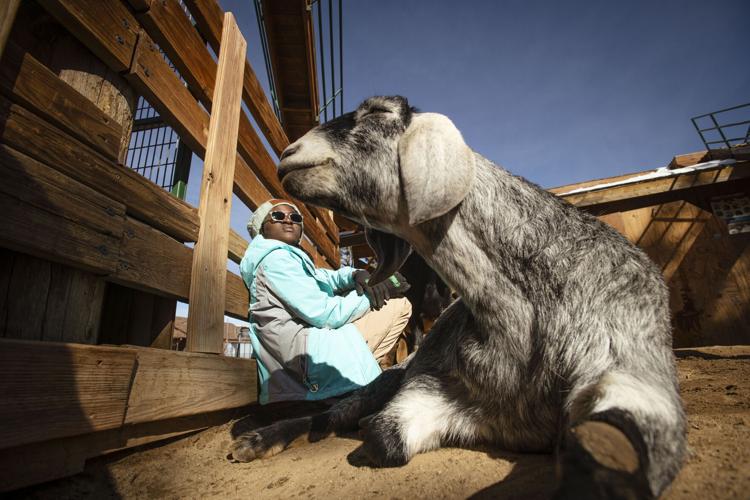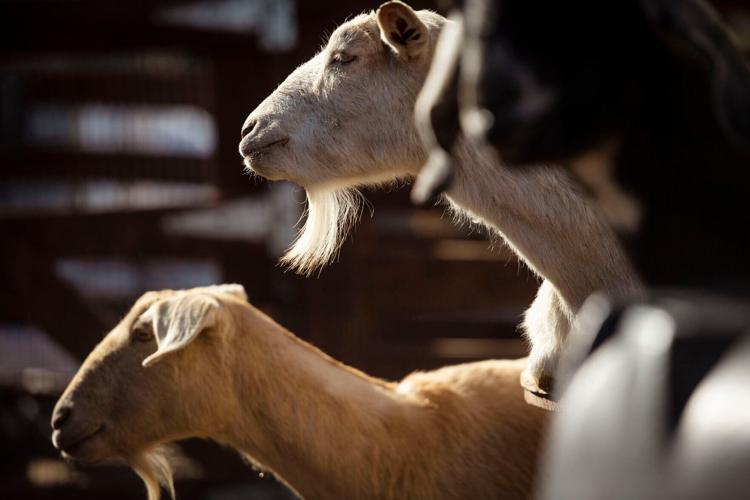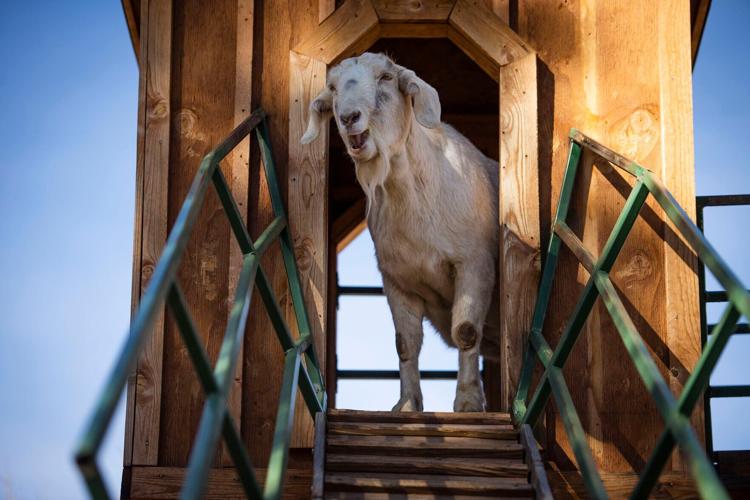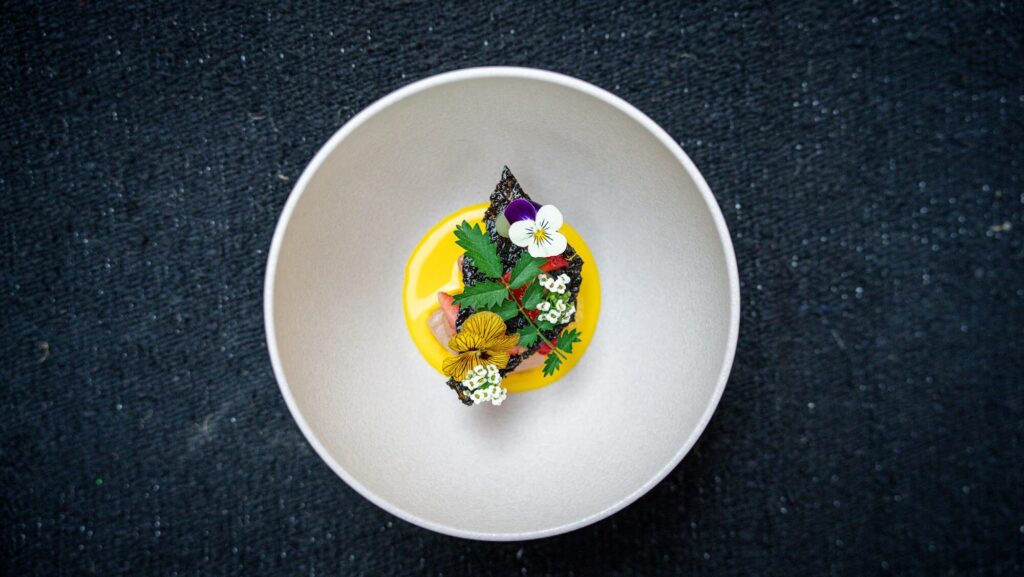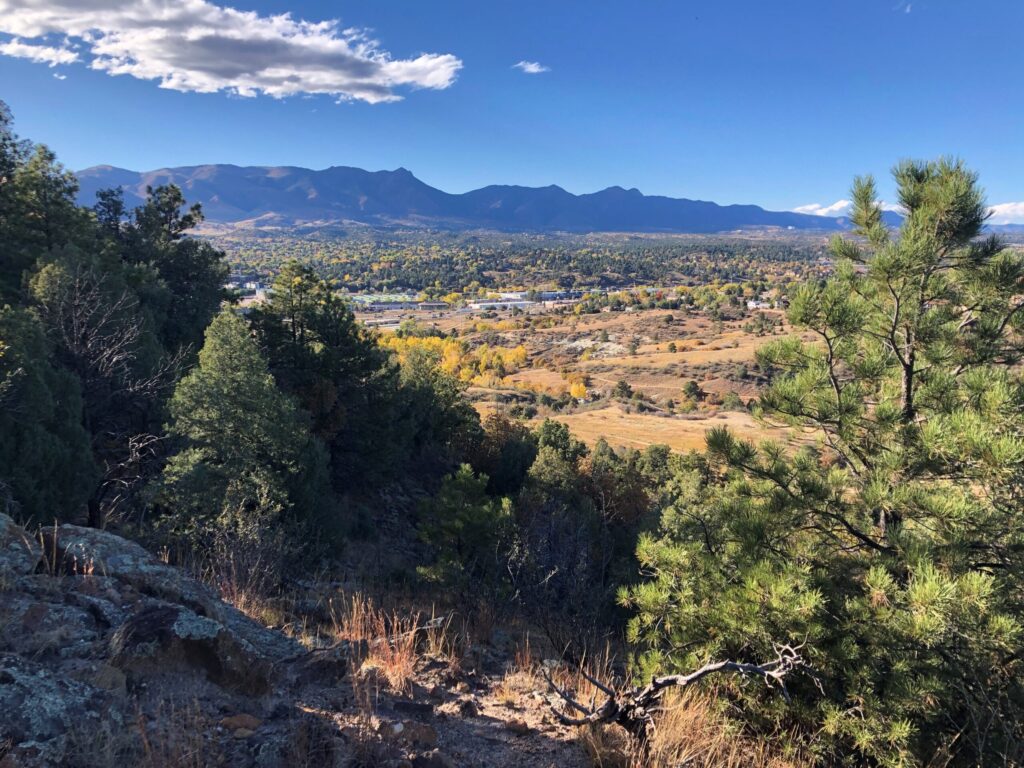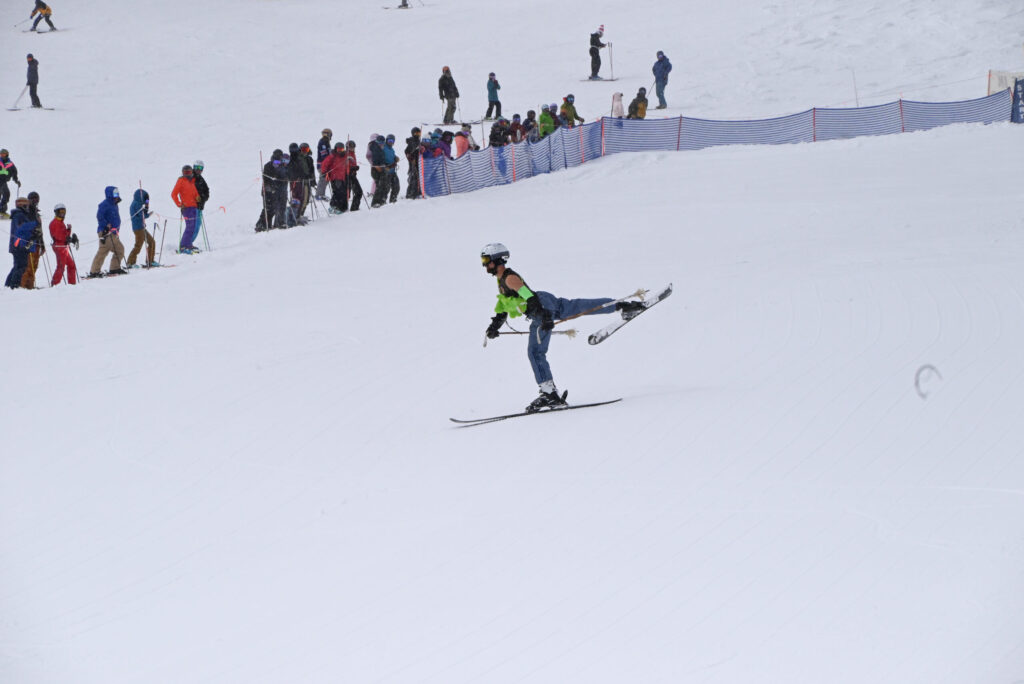Lovers of sunshine, brushing and humans: Meet the dairy goats at Cheyenne Mountain Zoo

Brie, a domestic dairy goat, shows off her teeth at the Goat Playground at Cheyenne Mountain Zoo. The zoo’s eight female dairy goats came to live at the zoo in 2016 after being at a dairy farm. The ladies are nicknamed the “The Cheese Girls” and are named after types of cheese. In addition to Brie, there are Ricotta, Asiago, Muenster, Colby, Queso, Mozzarella and Cotija. See a video of the goats at gazette.com .
photos by Chancey Bush, The Gazette
Meet “The Cheese Girls,” the domestic dairy goats of the Cheyenne Mountain Zoo. (Video by Skyler Ballard)
{
“@context”: “https://schema.org”,
“@type”: “VideoObject”,
“name”: “Who’s Who at the Zoo | Goats”,
“description”: “Meet “The Cheese Girls,” the domestic dairy goats of the Cheyenne Mountain Zoo. (Video by Skyler Ballard)”,
“thumbnailUrl”: “https://bloximages.newyork1.vip.townnews.com/denvergazette.com/content/tncms/assets/v3/editorial/0/8e/08e63dff-24b9-59d2-bc49-90295d0c717f/621037c4bb17e.image.jpg?resize=1396%2C785”,
“uploadDate”: “2022-02-18T17:00:00-07:00”,
“contentUrl”: “https://cdn.field59.com/GAZETTE/9c1281036d66f8784351f57f0686f3941846fe3c_fl9-360p.mp4”
}
Cotija is perched on a walkway high above the Goat Playground at Cheyenne Mountain Zoo, waiting patiently at the wheel of treats.
The dairy goat sticks her head through the railing to look down at Bailey Jones, the zoo’s domestic goat lead keeper, who’s standing on the ground getting ready to pour a handful of hay pellets into a cup. Cotija will then use her front hoof to pedal a bicycle wheel to work a pulley system that pulls the cup up to her mouth, where she knows the exact spot to stop the cup so the treats slide perfectly into her mouth.
Colby, the queen of the goat yard, is no dummy. If she stands beneath Cotija, she knows she’s likely to be showered in whatever pellets don’t make it into her buddy’s mouth.
“They’re fast learners,” said Jones, who’s also lead keeper for Australia Walkabout and Scutes Family Gallery, where she cares for superslow sloths who are decidedly not fast learners. “They learn in two to three sessions. I love to train them. They’re super food-motivated.”
Large, purring carnivorous cats: Meet the mountain lions at Cheyenne Mountain Zoo
What the heck are domestic goats doing at a zoo?
The eight ladies — Ricotta, Asiago, Muenster, Colby, Queso, Mozzarella, Cotija and Brie — are nicknamed “The Cheese Girls,” because they’re dairy goats who would normally make goat milk and cheese. The 5-year-olds, who aren’t related, came to the zoo from a Colorado dairy farm in 2016 to provide an interactive experience for zoo guests. People are welcome to pop into their yard and brush and feed the 120- to 160-pound creatures, as long as an attendant is present. It’s a popular exhibit for the smaller folks in the crowd, and usually open on weekends and whenever it’s above 40 degrees.
Practicing patience: Meet the two-toed sloths at Cheyenne Mountain Zoo
Will the zoo be selling cheese anytime soon?
No. Much like dairy cows that produce milk when they’re brewing babies, these girls only make milk when babies are in the picture. And because the zoo said no thanks to boy goats, the ladies will remain childfree.
A recipe for goat happiness
These sturdy creatures are simple. They want to hang with their human friends, get brushed or scratched, relax in the sunshine and chew their cud. The rich mahogany-colored Queso is Jones’ favorite, due to the way she happily hums when she’s found a particularly sunny spot to lie in. And when somebody happens to brush her while she’s sunbathing, all the better. Her head tips back and she opens her mouth in a goat smile, flashing her pearly whites. Ricotta also is a zoo keeper and visitor favorite. She loves nothing more than to follow people around in the hopes of being loved on.
“They remind me of a house cat and how they follow the sunbeams around the yard,” Jones said.
Large and in charge: Meet the hippos at Cheyenne Mountain Zoo
No Michelin-star meals needed
The girls mostly eat grass hay and a bit of produce, such as apples, carrots and romaine lettuce. Hay pellets are a special treat, as well as plain air-popped popcorn. And when a keeper drags out an old firehose dosed in blue raspberry Gatorade powder, watch out. That’s a little slice of goat heaven. And their blue tongues afterward make them even more adorable.
And let us not forget about tree boughs. When the boughs coordinator walks by, carrying their precious parcel, the goats yell at him to fork over the goods: “They’re like heeeeey,” Jones said.
Why the obsession with climbing and standing on stuff?
They’re made for it. On the bottom of their hooves is a soft pad that molds to whatever surface they’re on. That’s why they can stand on super-small surfaces and be totally comfortable. Their vision also helps. They have mesmerizing rectangle-shaped pupils that take in light differently and give them wider peripheral vision. They can see to their back feet, which also helps them climb, as well as keep a lookout for predators.
Contact the writer: 636-0270
Contact the writer: 636-0270








